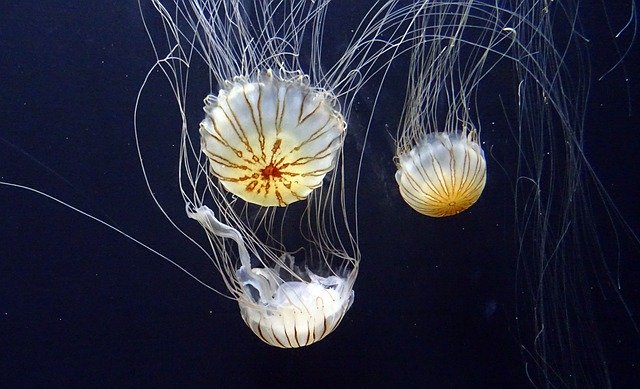One of the most fascinating marine creatures, the giant jellyfish Nemopilema nomurai, not only attracts by its large size, but its venom also causes fascination. A group of scientists decided to investigate what makes it so deadly.
This jellyfish, which can weigh up to 200 kilograms and competes with the Lion’s Mane jellyfish for the title of the largest in the world, bites hundreds of thousands of swimmers in the waters of the Korean peninsula, Japan and China.
There are big jellies, like the Nemopilema nomurai. It is *that* big. pic.twitter.com/ywyxVAJ7Ma
— ™ (@landbeyond) March 18, 2020
It is known that the bite of this animal, which can be up to 3.5 meters long, immediately causes intense pain. It is followed by redness and swelling of the affected part that can, in specific cases, even lead to death.
Because the exact mechanism of action of the venom is unknown, the scientists decided to analyze it through genomic, transcriptomic and proteomic sequencing. The results throw more questions than answers and speak of how little this species is known.
The researchers discovered an incredibly complex mix of more than 200 sting-related toxins. Each of these toxins could target specific organs or damage various systems.
“Although we tried to purify the deadly toxins from the venom of Nemopilema nomurai, it was excessively difficult to separate them from other proteins individually,” the authors explain in an article published in the Journal of Proteome Research.
This means that these toxins are so complex that it is difficult to decipher all the factors at stake, without resorting to other types of experiments.
To be able to study the venom, the team cut and frozen fresh tentacles directly from a living jellyfish, to centrifuge them and collect nematocysts, a specialized jellyfish cell that contains a coil of venom.
After extracting the proteins from the venom and separating them into different groups, the researchers injected a fraction of the protein into mice, to see which died and what. The results show that toxin-like proteins attack different targets: cell membranes, potassium channels and can even affect blood clotting.
At the autopsy of the mice, the researchers found that lung infection and edema were the most likely cause of death, which is consistent with reports in humans.
However, the authors have not yet deciphered how each of these individual toxins actually kills animals, suggesting that they might be working together.
